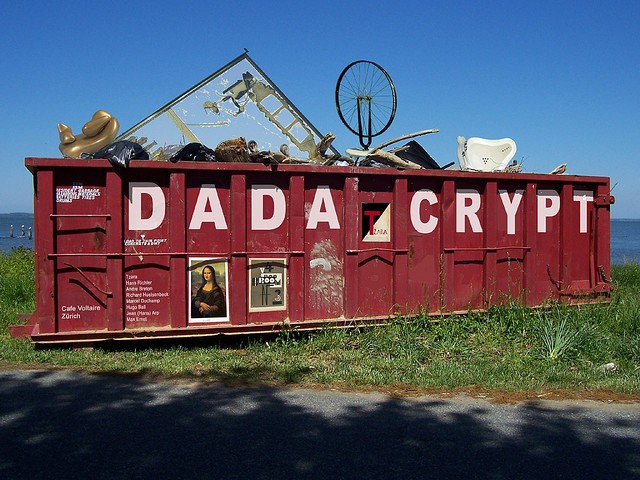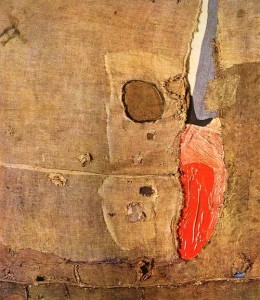This chapter explores the art of Warhol and the Dada Movement as part of its argument that {fluff,style,rhetoric} has made a come back and is equally, if not more important than actual stuff: “The lesson was simple and, once learned, tedious. Art is not stuff made out of stuff taken from the earth’s crust. Art is the attention that makes that stuff meaningful,” (p. 43). This summary also applies well to the very chapter itself!
The lesson begins with Andy Warhol, whose art and personality both emphasized a focus that did not delve below the surface level – that did not develop any deeper meaning. What did his images of soup cans offer that the grocery store didn’t? Simply an attention trap, Lanham argues. He summarizes the rules of the attention economy that we can learn from Warhol and his  work:
work:
- Build attention traps. Create value by manipulating the ruling attention structures. Judo, not brute force, gets the best results. Duchamp did this for a joke. Do it for a business.
- Understand the logic of the centripetal gaze and how to profit from it.
- Draw your inspiration from your audience not your muse. And keep in touch with that audience. The customer is always right. No Olympian artistic ego need apply.
- Turn the “masterpiece psychology” of conventional art upside down:
~ Mass production not skilled handwork
~ Mass audience not connoisseurship
~ Trendiness not timelessness
~ Repetition not rarity - Objects do matter. Don’t leave the world of stuff behind while you float off in cyberspace. Conceptual art gets you nowhere. Create stuff you can sell.
- Live in the present. That’s where value is added. Don’t build your house in eternity. “My work had no future at all. I know that. A few years. Of course my things will mean nothing.”
(pp. 53-54)
This is contrasted with Christo Javacheff’s Running Fence, which Lanham characterizes as authentic and responsible artistic entrepreneurship, which had meaning, but was still ultimately more about attention than stuff. This contrast is used to explain how rhetoric has always been used in two main ways: to draw attention to oneself or to strengthen social purposes.
In attempting to draw a conclusion from Dadaism, Lanham suggests that chance must be recognized as artistic inspiration, but importantly, one must recognize the opportunity when chance delivers it. This seeming paradox is the overlapping existence of attention and stuff from the first chapter: “Chance and planning, conceptual thought and pure play, had to be held in fruitful oscillation,” (p. 67). This is the lesson we take from Dada.
Questions:
1. Art history doesn’t end with Dadaism. Although Lanham gives a nod to the later rise of surrealism, I think a more interesting case might be the continued emphasis on art that values the depth and fecundity of the material itself. For example, Alberto Burri’s Sacco P5 clearly emphasizes material, and I continue to see new creations that emphasize this informal style of splashes, cracks, drips, lumps, and seams. How should we understand this continued emphasis on the material in the context of the author’s argument?
2. Since the publication of this book, there has been a pushback, perhaps as a response to globalization or perhaps as a response to the “fluff” of the Internet, that has emphasized the local, unique and handmade items over the items of mass produced trendiness that were the lessons of Warhol. Does this weaken the author’s argument?


